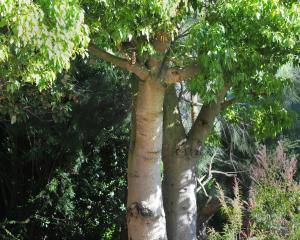However, they are often overlooked in New Zealand gardens because of the troublesome Crocosmia crocosmiiflora, commonly known as montbretia.
Montbretia invades or naturalises wasteland areas and provides gardeners with the hard task of trying to eradicate it.
Its corms multiply and travel deep down into the soil, making them tricky to dig out.
Not all Crocosmia are like montbretia, and there are certainly some species and cultivars worth growing.
Two that are growing in Dunedin Botanic Garden's Clive Lister Garden are in full flower.
Crocosmia masoniorum is an attractive species with glowing orange flowers.
It grows up to 80cm high.
A few stunning cultivars have been bred from this.
Crocosmia "Lucifer" has brilliant flame-red flowers and reaches a height of about 120cm.
This cultivar has just been named 2010 summer bulb of the year by the Netherlands Flower Bulb Information Centre.
- Crocosmia range in height from 60cm to 120cm.
- They have long strap-like foliage similar to that of an iris.
- Flower spikes are held horizontally above the foliage, are produced in summer and often flower into autumn in shades of orange, red or even yellow.
- Plants can be either grown in full sun or partial shade.
- They like free-draining soils with organic compost added.
- Choose your site carefully when planting.
- If transplanting in the future, it can be hard to remove all the corms in the ground.
- Plants should be dead-headed once flowering has finished, to prevent seeding.
- Leave the foliage to die back or turn yellow before cutting back. Large clumps should be divided in autumn.
- Useful as a cut flower.
By Stephen Bishop, curator of the Clive Lister Garden at Dunedin Botanic Garden.











